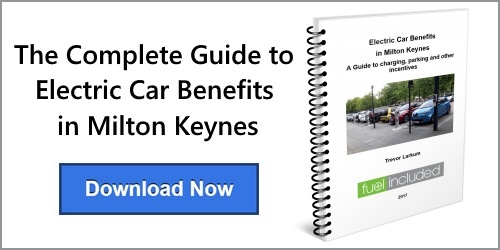In January 2016, Milton Keynes was awarded Go Ultra Low City status alongside Bristol, London and Nottingham and secured multi-million pound investment from the UK Government. The cities and regions each received a share of £40 million funding by proposing innovative ideas to encourage drivers to choose an electric car.

Milton Keynes Council received £9 million funding to further its work developing modern vehicles to tackle harmful emissions, reduce its carbon footprint, and continue to make Milton Keynes one of the most sustainable cities in Europe.
The Green Parking Permit scheme was the first proposal from any winning bid to be delivered using Go Ultra Low Cities funding. The Electric Vehicle Experience Centre is the latest proposal to be delivered.

Future plans for the funding in Milton Keynes include:
- Charging Hubs, where electric vehicles can be fully recharged in around 30min: EV Rapid Charging Hubs are being established at the Coachway at M1 J14 and in the City Centre
- Charging posts close to residential areas: Milton Keynes will commit to providing a charging point to any resident of the City who buys an EV, either at home or on a nearby street if the buyer does not have off-street parking
- Priority for EVs in bus lanes
- Destination charging at popular locations including supermarkets, hotels and leisure facilities
- Trialling the latest developments in technology such as inductive charging
- Information and signage: Signage will be provided giving motorists clear information on facilities for EVs.

With regard to the Charging Hubs, this project will see Chargemaster supply its latest charging infrastructure to set up two filling-station-style EV rapid charging hubs and 50 destination chargers across the town.









